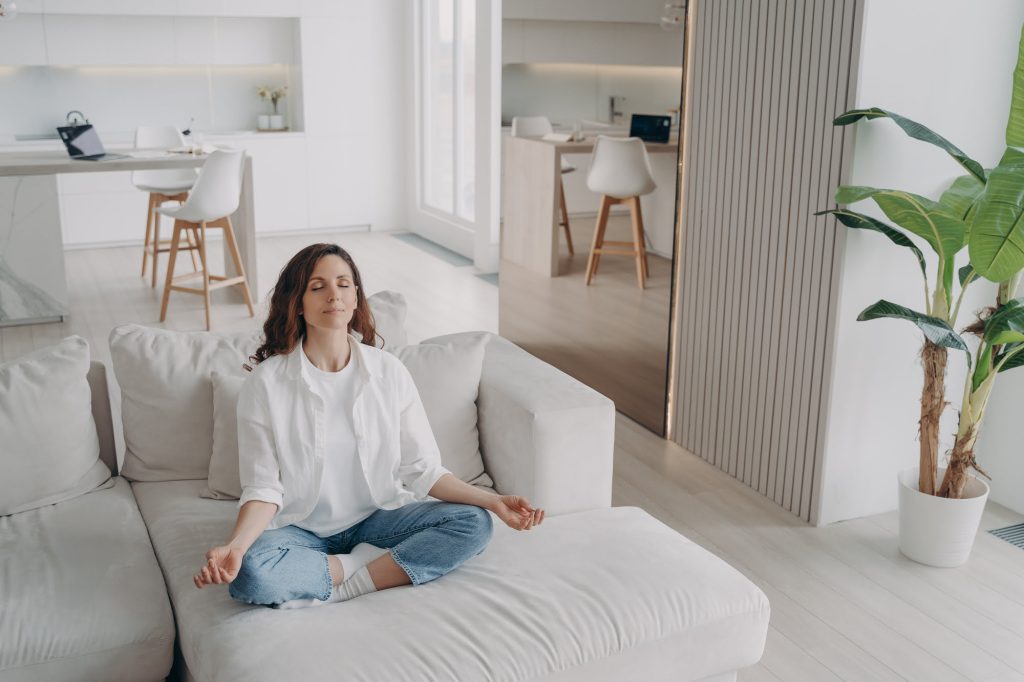The Art of Curating Personal Spaces
Jessica White August 14, 2025
In today’s fast-paced world, the concept of personal spaces has evolved far beyond the traditional notion of a “home.” Now, curating a personal space isn’t just about physical décor; it’s about creating an environment that promotes well-being, individuality, and functionality. The art of curating personal spaces is a reflection of our lifestyle, preferences, and the increasing desire to make every space a sanctuary. As we enter 2025, several emerging trends are reshaping how we design and inhabit our personal environments.

The Importance of Personal Spaces in Today’s World
Personal spaces serve as a retreat from the outside world, offering a haven for rest, creativity, and personal growth. In an era where work-life balance is increasingly sought after, the need for a well-curated space has never been greater. People are now aware of the emotional and psychological impact that their surroundings can have, and as a result, they’re placing more emphasis on how they design their spaces.
Creating a personal space involves more than just filling a room with furniture. It’s about enhancing the environment with elements that resonate with your personality, foster productivity, and provide comfort. Whether it’s a cozy nook for reading, a vibrant workspace, or a peaceful sanctuary for meditation, the design of our personal spaces directly influences how we feel and interact with the world around us.
The Rise of Biophilic Design
One of the most prominent trends in 2025 is the rise of biophilic design, which integrates nature into indoor spaces. This design philosophy is grounded in the idea that humans have an innate connection to nature, and by bringing the outdoors inside, we can enhance our well-being.
Biophilic design is not limited to the addition of houseplants (though they are a crucial element). It extends to incorporating natural materials, such as wood and stone, as well as maximizing natural light and outdoor views. Open spaces, green walls, and indoor gardens are becoming staples in personal space curation. Studies have shown that exposure to nature can reduce stress, improve mood, and increase creativity, which explains why biophilic design has gained popularity in both residential and commercial spaces alike (Joye, 2017).
Incorporating natural elements can be as simple as adding plants to a living room or as elaborate as creating a mini indoor jungle. Large windows that allow natural light to pour into the room, wood paneling, and water features like small fountains all contribute to a tranquil, nature-inspired environment. Not only do these elements improve aesthetics, but they also have the potential to boost mental health.
Multi-Functional Spaces for a Flexible Lifestyle
With the rise of remote work and the blending of personal and professional lives, the demand for multi-functional spaces is also growing. No longer is it enough to have a room designated solely for sleeping or working. In 2025, flexibility is key, and our personal spaces must adapt to the changing needs of our daily routines.
A growing trend is the creation of multi-purpose rooms that combine areas for work, relaxation, and recreation. For example, a living room may also double as a workspace with the addition of a sleek desk, ergonomic chair, and smart storage solutions. Bedrooms are now being designed with space for exercise equipment or meditation corners to promote health and wellness. Multi-functional furniture, such as foldable desks, storage ottomans, and modular seating, is becoming increasingly popular, helping people maximize limited space in small apartments or houses.
The rise of multi-functional spaces is not only about practicality but also about creating environments that reflect the fluidity of modern life. With a focus on adaptability, personal spaces can evolve with the changing needs of their occupants, supporting both work and leisure in a seamless manner.
Sustainable and Eco-Friendly Practices
As environmental concerns continue to grow, more people are seeking ways to incorporate sustainable and eco-friendly practices into their personal spaces. This trend goes hand in hand with the increased focus on biophilic design, as it encourages the use of natural and sustainable materials in interiors. However, sustainability extends beyond the materials used—it’s also about creating spaces that reduce waste, save energy, and promote environmental consciousness.
In 2025, consumers are prioritizing eco-friendly products like energy-efficient lighting, low-VOC paints, and sustainable furniture made from recycled or upcycled materials. A minimalist approach to design, with fewer but high-quality items, is becoming more popular as people begin to understand the impact of consumerism on the environment. As a result, people are increasingly choosing second-hand furniture or supporting brands that emphasize sustainable production methods.
Moreover, the use of renewable energy sources, such as solar panels or energy-efficient appliances, is a growing trend in the curation of personal spaces. People are integrating smart home technology to monitor energy use, control lighting, and optimize heating and cooling systems, further contributing to sustainability efforts.
Personalized Technology Integration
As technology becomes more deeply embedded in our daily lives, the integration of personalized tech into our living spaces has become an emerging trend. Smart home devices that control lighting, temperature, and security are no longer luxuries but necessities for many. However, the focus in 2025 is shifting toward technology that enhances both convenience and personal well-being.
Voice-activated assistants, smart thermostats, and automated lighting systems are now commonplace. Beyond that, wellness-focused technologies like air purifiers, sound machines, and circadian lighting are becoming integral to curating personal spaces. These innovations aim to optimize the environment for better sleep, increased focus, and overall health.
Another trend in tech integration is the growing popularity of virtual reality (VR) and augmented reality (AR) in home entertainment and design. People are using VR to visualize design changes before committing to them or even using it as a form of immersive relaxation or entertainment. The increasing affordability of VR headsets and AR apps means that tech can now play a significant role in shaping personal spaces.
Creating Emotional and Mental Well-Being Spaces
Finally, an emerging trend in the art of curating personal spaces is designing environments that promote emotional and mental well-being. Mental health is now recognized as a crucial aspect of overall health, and the spaces we inhabit can have a profound impact on our emotional state.
Color psychology plays a significant role in this trend, with people selecting calming tones such as soft blues and greens for relaxation areas, or energizing hues like yellow and orange for workspaces. Soft, tactile materials like velvet or silk are being used to create inviting and comforting environments, while the use of aromatherapy diffusers or essential oil dispensers is on the rise to create mood-enhancing atmospheres.
In addition, creating spaces for mindfulness practices—whether it’s a corner for meditation, a yoga mat setup, or a cozy reading nook—is gaining popularity. These spaces provide individuals with the opportunity to retreat from the hustle and bustle of daily life and recharge mentally and emotionally.
Conclusion
The art of curating personal spaces in 2025 is about creating environments that reflect both functionality and personal well-being. From biophilic design to sustainable practices and personalized technology, the trends of today highlight the importance of making spaces that support not only our physical needs but also our mental and emotional well-being. As we continue to navigate the complexities of modern life, curating a personal space that aligns with our lifestyle has never been more essential. Whether it’s incorporating nature into the home, creating multi-functional rooms, or fostering mental peace through thoughtful design, the spaces we inhabit are a direct reflection of our evolving needs and aspirations.
References
- Joye, Y. (2017). The Well-Being of People in Green Spaces: A Review of Research on Nature’s Influence on Human Health and Well-Being. Available at: https://www.journals.sagepub.com (Accessed: 14 August 2025).
- Pitts, T. (2020). Trends in Sustainable Design: How Sustainability is Changing Home Design in 2020. Available at: https://www.sustainableliving.com (Accessed: 14 August 2025).
- Smith, R. (2023). The Impact of Personalized Technology on Home Design in 2025. Available at: https://www.techtrendsjournal.com (Accessed: 14 August 2025).







